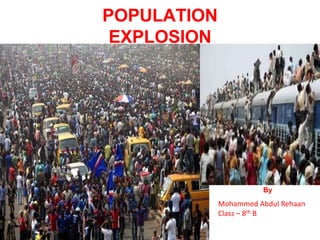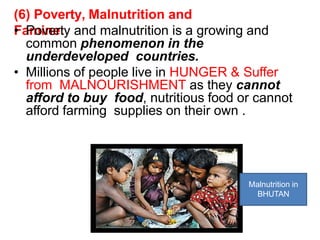1) The document discusses the causes, consequences, and measures to address population explosion. Some key causes mentioned are high fertility rates, decreasing infant mortality rates, and increasing life expectancy.
2) Consequences of population explosion include overexploitation of natural resources, increased urbanization and industrialization leading to more slums, and shrinking agricultural land.
3) Measures taken in India to address population growth include education initiatives and improving standards of living to help stabilize population growth over time. Addressing issues like poverty and illiteracy are seen as important ways to influence population trends.































